Benefits of Jogging with Your Dog
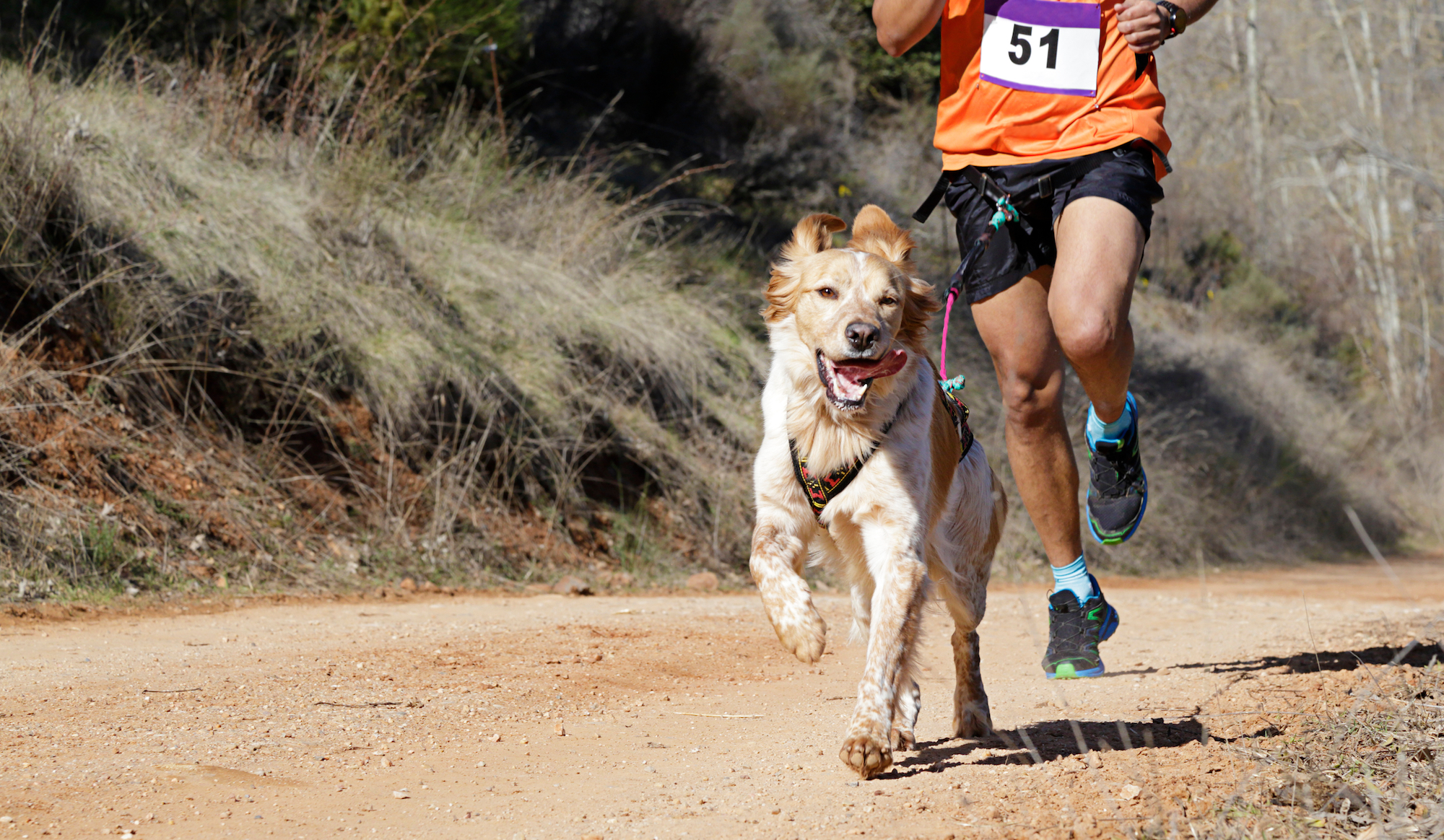
Jogging with your dog has numerous benefits, both for their physical health and their mental wellbeing. On a physical level, jogging helps to maintain a healthy weight for your furry friend, promoting cardiovascular health and strengthening their muscles. Additionally, regular exercise can reduce the risk of obesity, which is a common issue for dogs. Moreover, jogging together also offers mental stimulation to your dog, as they get to explore new environments, interact with other dogs and people, and experience different sights and smells. This can help alleviate boredom and reduce behavioral problems such as excessive barking or chewing. Overall, jogging with your dog is a win-win situation that promotes their overall wellness.
1 Physical health benefits
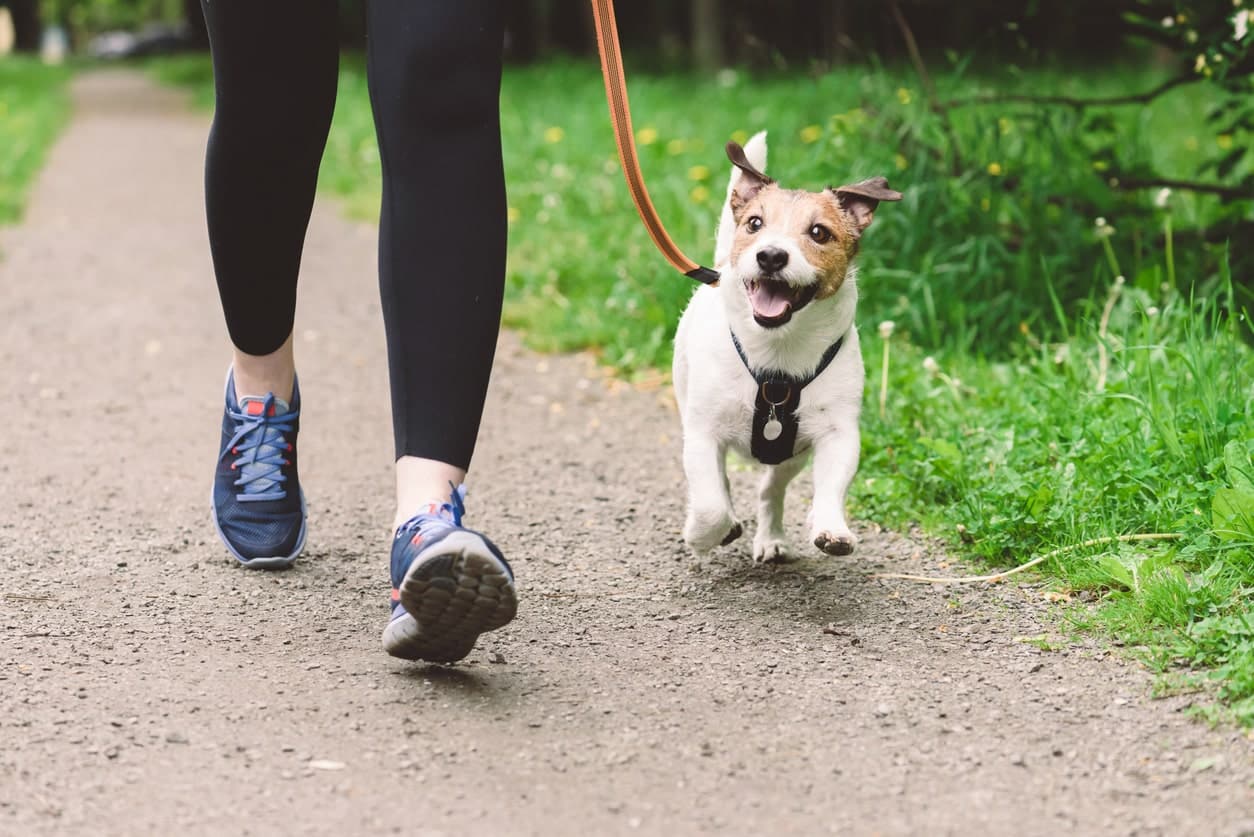
Jogging with your dog not only benefits your furry friend, but it also provides numerous physical health benefits for you as well. Regular jogging can improve cardiovascular fitness, strengthen muscles, and increase endurance. It helps to maintain a healthy weight and can even decrease the risk of certain chronic diseases such as heart disease and obesity. Additionally, jogging with your dog promotes better overall fitness levels, leading to increased energy and vitality in both you and your canine companion.
2 Mental health benefits

Jogging with your dog not only has physical health benefits but also provides a boost to your mental well-being. Spending quality time with your furry companion can help reduce stress, anxiety, and depression. The rhythmic motion of jogging combined with the serene presence of your dog can create a calming effect and improve your mood. Additionally, the bond and companionship developed during these exercise sessions can enhance feelings of happiness and fulfillment. Jogging with your dog is a holistic approach to wellness that nourishes both the body and mind.
Choosing the Right Equipment for Jogging with Your Dog

When it comes to jogging with your dog, it's important to have the right equipment to ensure both your safety and comfort. One of the most important considerations is choosing a properly fitted harness or collar for your dog. This will help distribute the pressure evenly and prevent any discomfort or injuries. Additionally, you may want to consider using a retractable leash or a hands-free leash that allows you to move more freely while keeping your dog close by. These leashes provide flexibility and control during your jog, making the experience more enjoyable for both you and your furry companion.
1 Properly fitted harness or collar

When it comes to jogging with your dog, a properly fitted harness or collar is essential for their safety and comfort. A harness distributes the pressure evenly across their body, preventing any strain on their neck. Make sure the harness fits snugly but allows for freedom of movement. Similarly, if you prefer to use a collar, ensure it is securely fastened without being too tight. Remember, choosing the right equipment will keep your dog secure and prevent any discomfort during your jog.
2 Retractable leash or hands-free leash

When choosing the right equipment for jogging with your dog, consider using a retractable leash or a hands-free leash. A retractable leash allows your dog to have more freedom to explore while still keeping them close by. It can be easily adjusted to give your dog more or less slack as needed. On the other hand, a hands-free leash attaches around your waist, allowing you to have both hands free for optimal jogging form. This type of leash provides a comfortable and secure way to jog with your dog, ensuring that you both can enjoy a safe and enjoyable experience.
Warm-up Exercises for You and Your Dog

Before embarking on your jog, it is important to properly warm up both yourself and your dog to prevent injury and ensure a successful workout. For you, stretching exercises are crucial to loosen up your muscles and increase flexibility. Start with dynamic stretches such as leg swings and arm circles. As for your furry companion, a short walk or light jog will suffice as a warm-up. This allows their muscles to warm up gradually and prepares them for the upcoming jog. By incorporating warm-up exercises into your routine, you set the foundation for a safe and enjoyable jogging experience with your dog.
1 Stretching exercises

Before embarking on a jogging session with your dog, it's important to incorporate stretching exercises into your warm-up routine. Stretching helps loosen your muscles and joints, preventing injuries and increasing flexibility. Start by gently massaging your dog's legs and gradually move onto stretches like the "downward dog" pose or leg extensions. For yourself, focus on stretches that target your lower body, such as lunges or hamstring stretches. By including stretching exercises in your warm-up, you'll prepare both you and your furry companion for a safe and enjoyable jog.
2 short walk or light jog
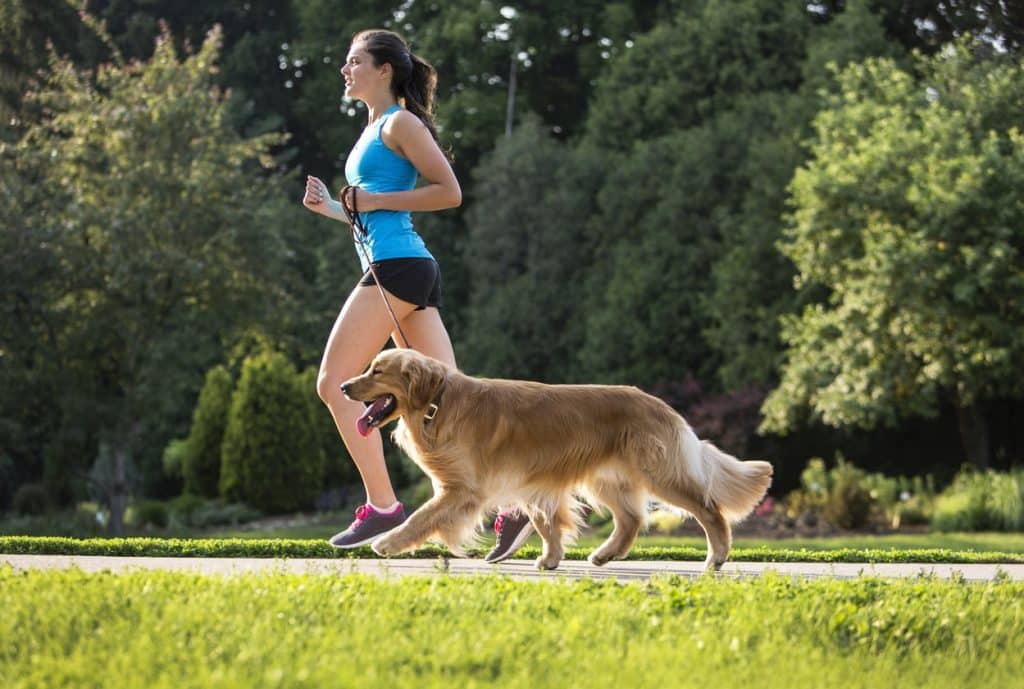
One important step before starting your jogging session with your dog is to warm up properly. This not only prepares your muscles for the exercise but also allows your dog to stretch and loosen up. One way to do this is by taking a short walk or engaging in a light jog before you begin your actual run. This helps to gradually elevate your heart rate and warm up your muscles, reducing the risk of injury for both you and your furry companion.
Safety Tips for Jogging with Your Dog

When it comes to jogging with your dog, ensuring their safety is of utmost importance. Here are some essential safety tips to keep in mind:
- Avoid jogging during extreme weather: Extreme heat or cold can be dangerous for your dog. Stick to jogging during cooler times of the day and make sure your dog stays hydrated.
- Visibility gear for you and your dog: Invest in reflective gear or lights that can be attached to your clothing or your dog's collar to increase visibility, especially if you're jogging during low-light conditions.
Remember, taking precautions and prioritizing safety will ensure a smoother and more enjoyable jogging experience for both you and your furry friend.
1 Avoid jogging during extreme weather
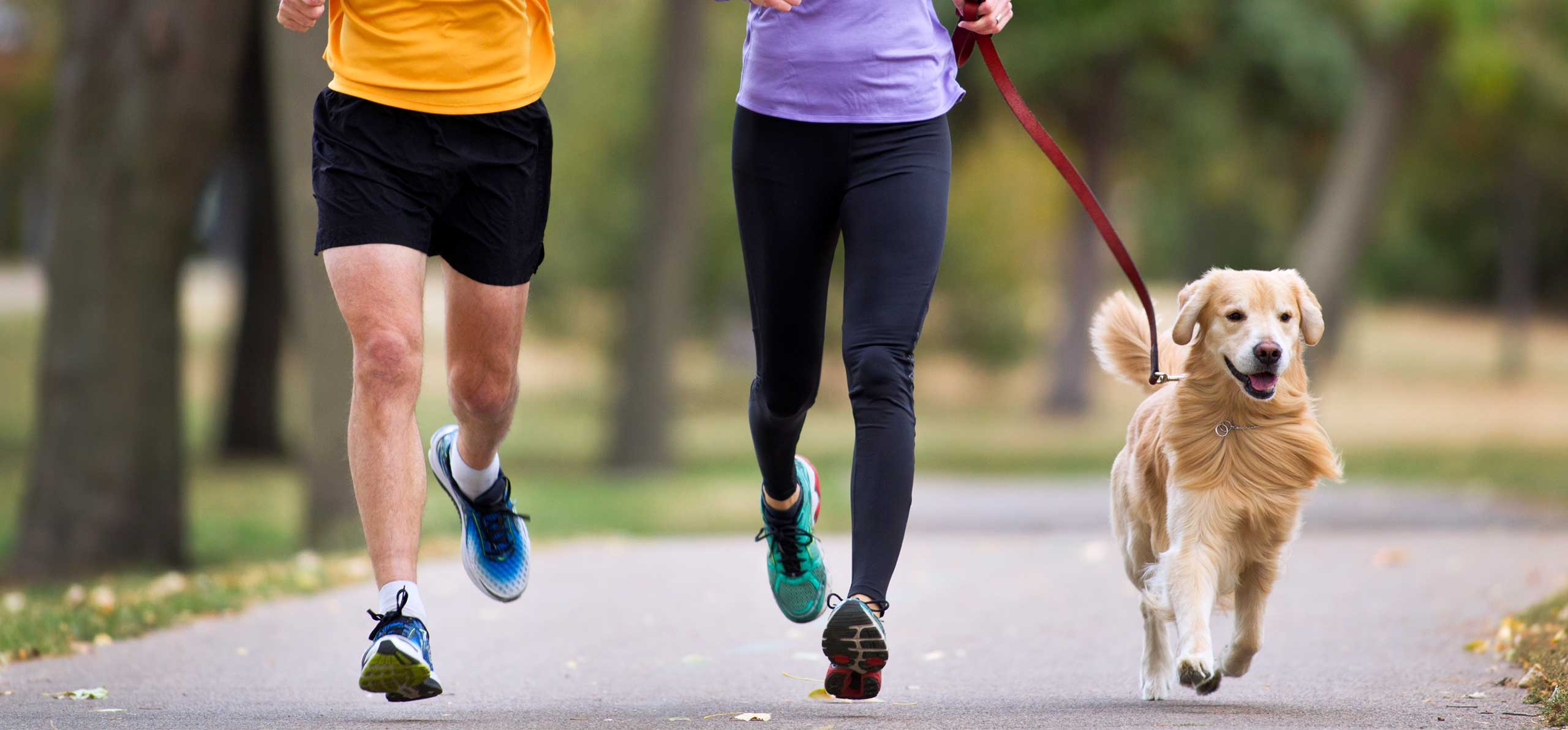
When it comes to jogging with your dog, it's important to prioritize their safety and well-being. One of the key factors to consider is the weather conditions. Extreme weather, such as very hot or cold temperatures, can be harmful to both you and your furry friend. Jogging in high temperatures puts your dog at risk of dehydration and heatstroke, while jogging in extremely cold weather can lead to frostbite or hypothermia. It's best to avoid jogging during these extreme weather conditions and opt for indoor exercise or wait for more favorable weather. Your dog will thank you for keeping them safe.
2 Visibility gear for you and your dog

When jogging with your dog, it's essential to prioritize safety, especially when visibility is low. Investing in visibility gear for both you and your furry companion is crucial to ensure that you're easily seen by others, especially motorists. For yourself, consider wearing reflective clothing or accessories like a reflective vest or arm bands. For your dog, opt for a reflective collar or attach a small LED light to their harness or collar. These simple yet effective gear choices can significantly enhance visibility and reduce the risk of accidents while jogging together.
Choosing the Right Route for Jogging with Your Dog

When it comes to jogging with your dog, choosing the right route is essential for a safe and enjoyable experience. Look for dog-friendly trails and parks in your area that will allow you to jog without any restrictions. These trails often have dedicated paths for runners and are equipped with waste stations for convenient clean-up. Additionally, avoid crowded areas to minimize distractions and ensure the safety of both you and your furry companion while jogging. Consider researching local parks or asking fellow dog owners for recommendations on the best jogging routes in your community.
1 Dog-friendly trails and parks
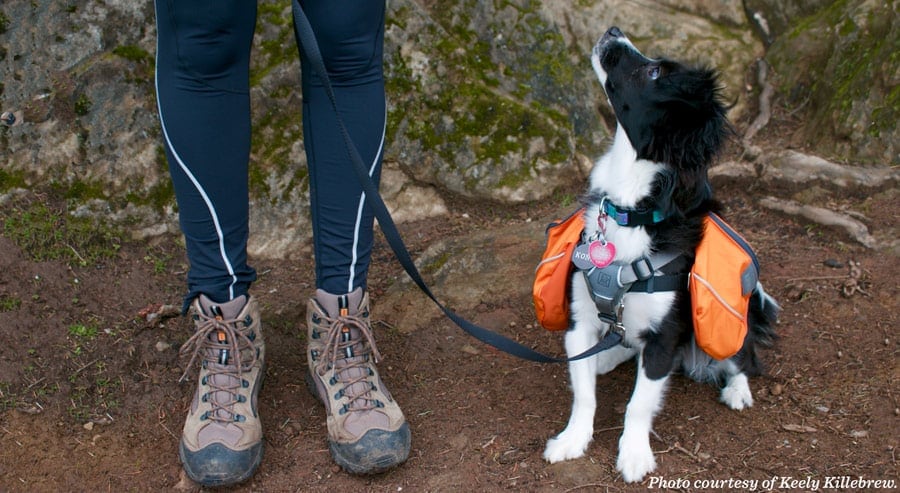
When choosing the right route for jogging with your dog, it's important to consider dog-friendly trails and parks. These designated areas are designed with the safety and enjoyment of both dogs and their owners in mind. Dog-friendly trails often have wide paths that are suitable for jogging, as well as plenty of open space for your dog to explore and play. Parks may also have amenities such as water fountains and waste disposal stations conveniently located along the trail. Jogging in these areas ensures that you and your furry companion can enjoy a peaceful and uninterrupted workout together.
2 Avoiding crowded areas
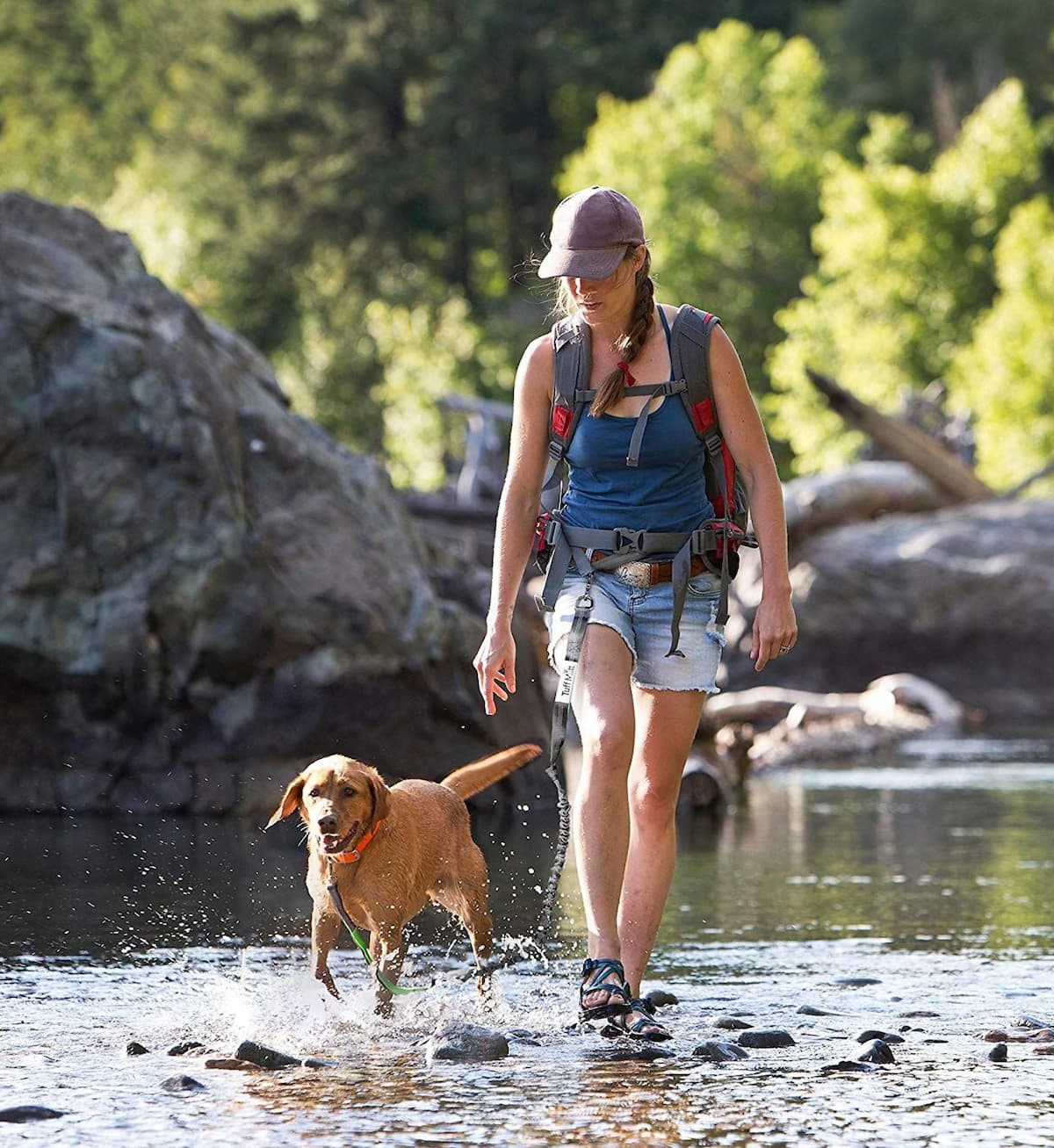
When jogging with your dog, it's important to choose routes that are not crowded. Crowded areas can increase the risk of accidents or conflicts between your dog and other joggers, pedestrians, or other animals. Look for quieter routes such as dog-friendly trails or paths in less populated areas. Avoiding parks during peak hours can also help you find less congested spaces for your jog. By selecting less crowded areas, you can ensure a safer and more enjoyable jogging experience for both you and your furry companion.
Hydration and Nutrition for You and Your Dog

Maintaining proper hydration and nutrition is crucial for both you and your dog when jogging together. Make sure to bring enough water for both of you, especially on hot days, to prevent dehydration. Consider investing in a collapsible water bowl for easy access. As for nutrition, ensure that both you and your dog have properly fueled before the jog. Your dog's regular diet should provide them with enough energy, but consider speaking to a veterinarian about any additional nutritional needs specific to their breed or size. For yourself, opt for a balanced meal with carbohydrates and protein to sustain your energy levels throughout the run. Remember, staying hydrated and properly nourished is essential for an enjoyable and safe jogging experience with your furry companion.
1 Water breaks during the jog

Staying hydrated is crucial for both you and your furry jogging companion. During your jog, it's important to take regular water breaks to ensure that both you and your dog stay hydrated. Bring a water bottle and a collapsible bowl or portable water dispenser for your dog. Find a shady spot along your route to stop and allow your dog to drink. Be mindful of the temperature and make sure the water is not too cold or too hot. Hydrating frequently will help prevent dehydration and keep both you and your dog energized during your jog.
2 Proper diet and post-jog nutrition
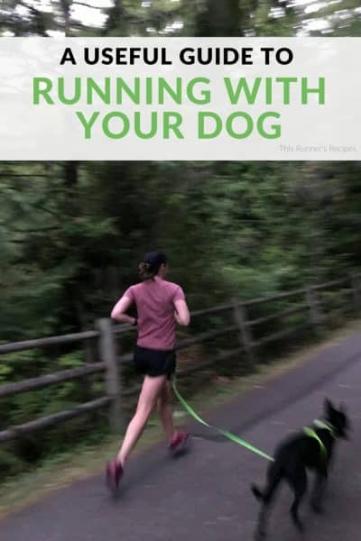
Proper diet and post-jog nutrition play a crucial role in keeping your dog healthy and energized. After a jog, your dog will need to replenish their energy levels. Ensure you provide them with a balanced diet that includes high-quality protein, healthy fats, and carbohydrates. Consult with your veterinarian to determine the appropriate portion sizes and types of food for your dog's specific needs. Additionally, offer your dog fresh water immediately after the jog to prevent dehydration. A well-nourished dog will be better equipped to handle the physical demands of jogging.
Training and Commands for Jogging with Your Dog

When it comes to jogging with your dog, proper training and commands are essential to ensure a safe and enjoyable experience for both of you. Training your dog to understand and respond to specific commands will help you maintain control during your jog. Start by teaching basic obedience commands such as "sit," "stay," and "heel." These commands will help you maintain a steady pace and prevent your dog from pulling or veering off in different directions. Additionally, training your dog to have good leash manners will make the jogging experience more comfortable for both of you. Consistency and positive reinforcement are key when it comes to training your dog for jogging. With practice, your furry companion will learn to be a reliable running partner.
1 Basic obedience commands

When jogging with your dog, it is important that they are well-trained and obedient. Basic obedience commands are essential for maintaining control and ensuring the safety of both you and your furry companion. Commands such as "sit," "stay," and "heel" will help you maintain a consistent pace and prevent your dog from veering off course or getting into potentially dangerous situations. By practicing these commands regularly, you can establish a strong bond with your dog and make jogging together a pleasant experience for both of you.
2 Training for leash manners

Training your dog to have good leash manners is essential for a successful jogging routine. Start by teaching your dog basic obedience commands such as "sit," "stay," and "heel." Gradually introduce the concept of walking politely on a leash by using positive reinforcement techniques like treats and praise. Practice walking at a steady pace and rewarding your dog for staying by your side. Consistency and patience are key when training leash manners, so be sure to practice regularly and provide plenty of positive reinforcement.
Common Challenges and Solutions for Jogging with Your Dog
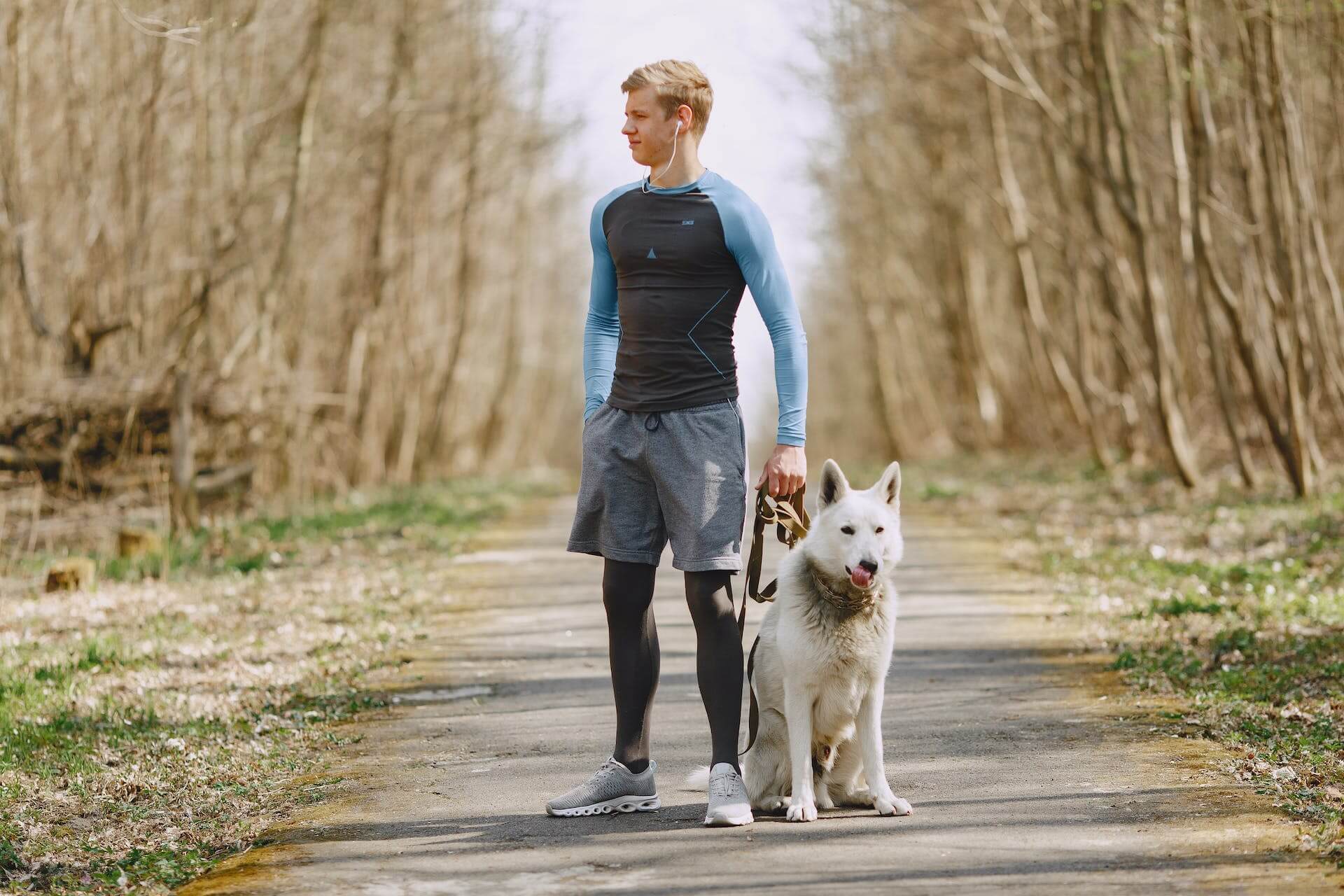
One common challenge when jogging with your dog is leash pulling. Dogs might get excited or distracted and start pulling on the leash, making it difficult for you to maintain a steady pace. To address this issue, you can work on leash training with your dog, teaching them to walk beside you without pulling. You can also use a harness or collar that discourages pulling.
Another challenge is overexertion or fatigue. It’s important to be aware of your dog's limitations and not push them too hard. If your dog starts panting excessively or slowing down significantly, it's time to take a break or end the jog. Make sure to gradually increase the distance and intensity of your jogs to build your dog's endurance over time. Regular rest breaks and adequate hydration are also essential.
By being aware of these challenges and implementing appropriate solutions, you can have a successful and enjoyable jogging routine with your dog.
1 Leash pulling

Leash pulling can be a common challenge when jogging with your dog. It can make the experience frustrating and difficult for both you and your furry companion. To address this issue, it's important to focus on leash training and teaching your dog proper leash manners. Start by using positive reinforcement techniques to reward your dog for walking by your side without pulling. Consistency is key, so continue practicing these training exercises during your regular jogging sessions to help improve your dog's behavior on the leash.
2 Overexertion or fatigue

Overexertion or fatigue can be a common challenge when jogging with your dog. Dogs may become overly excited or enthusiastic during the jog, leading them to push themselves too hard. It's important to recognize the signs of overexertion, such as excessive panting, slowing down, or lagging behind. If you notice these signs, it's crucial to immediately slow down or take a break. Provide your dog with water and allow them to rest before continuing. Gradually build up your dog's endurance over time to prevent fatigue and ensure a safe and enjoyable jogging experience for both of you.
Conclusion
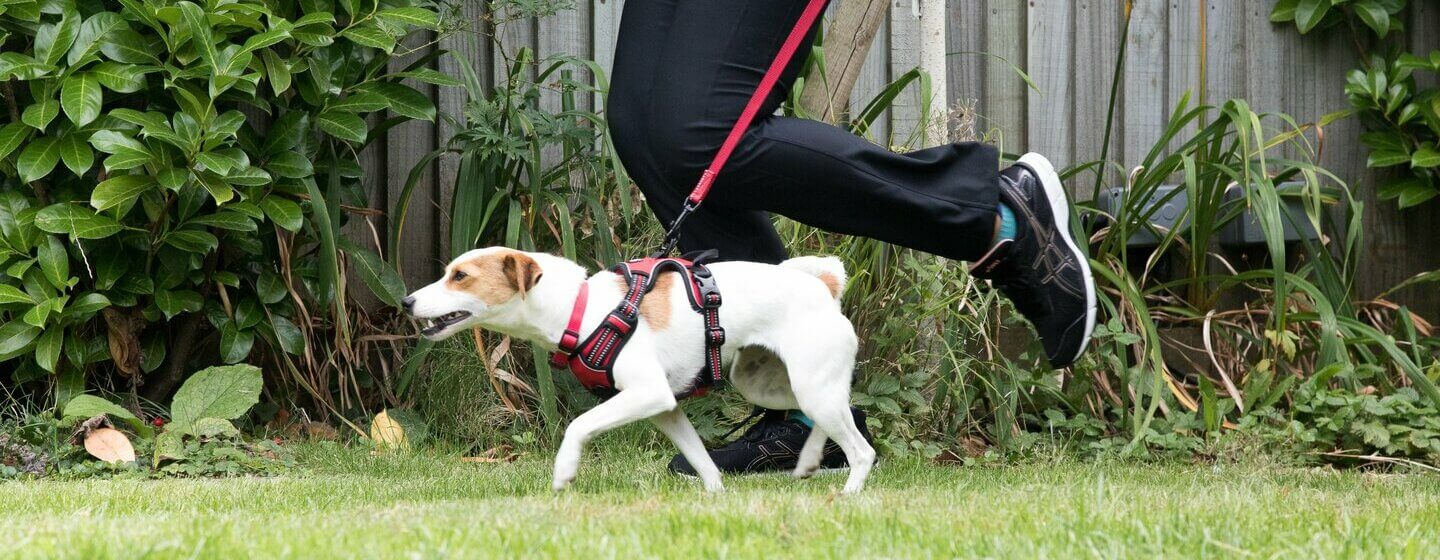
In conclusion, jogging with your dog can be a rewarding and beneficial activity for both you and your furry friend. Not only does it provide physical exercise, but it also offers mental stimulation and strengthens the bond between you and your dog. By choosing the right equipment, warming up properly, following safety tips, selecting appropriate routes, and ensuring hydration and nutrition, you can have a successful jogging routine with your dog. Remember to address any challenges that may arise through training and commands. So get out there and enjoy the benefits of jogging with your four-legged companion!
Comparison between jogging solo and jogging with your dog
.jpg)
Jogging solo and jogging with your dog both have their own unique benefits. When jogging alone, you have the freedom to set your own pace and focus solely on your own physical and mental health. It provides an opportunity for solitude and introspection.
On the other hand, jogging with your dog adds a social and bonding element to the activity. It allows you to spend quality time with your furry companion while also getting exercise yourself. Jogging together can strengthen the bond between you and your dog, as well as provide mental stimulation for them.
Overall, whether you prefer jogging solo or with your dog depends on your personal preferences and goals. Both options offer their own set of advantages, so it's important to choose what works best for you and your canine companion.
Tips for a successful jogging routine with your dog
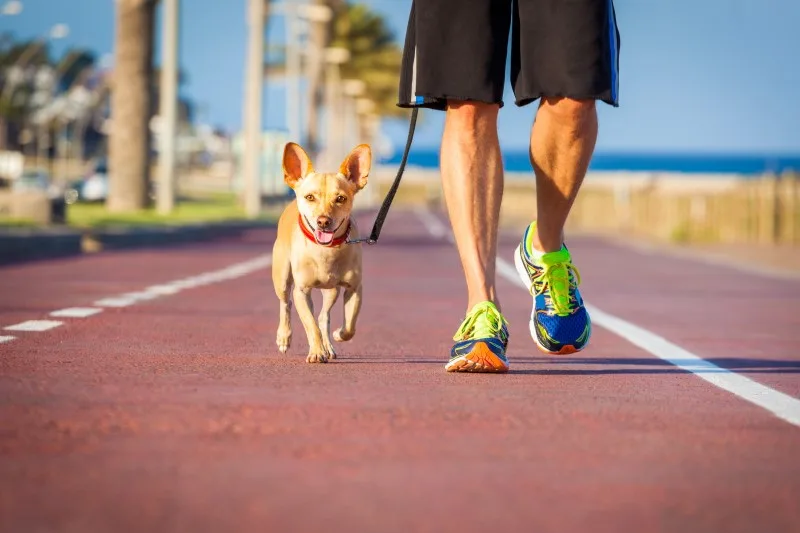
To have a successful jogging routine with your dog, consider the following tips. Firstly, start slow and gradually increase the intensity and duration of your jogs to avoid overexertion. Secondly, always warm up before each run by stretching and going for a short walk or light jog. Additionally, make sure to choose a dog-friendly route that is safe and avoids crowded areas. Lastly, remember to bring water for both you and your furry companion and provide them with proper post-jog nutrition. By following these tips, you can ensure a successful and enjoyable jogging experience with your dog.




0 Comments